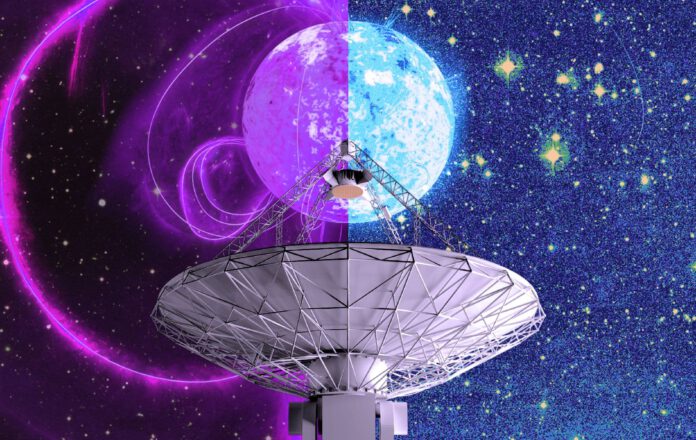
An extraordinary object has been discovered in our night sky: a neutron star that likely spins more slowly than any other ever detected. This discovery challenges our understanding of neutron stars, according to researchers. “The fact that the signal repeats at such a slow rate is extraordinary,” says lead researcher Manisha Caleb.
Understanding Neutron Stars
To appreciate why this ‘lazy’ neutron star is so unique, we need to first understand what neutron stars are. When large stars—with about ten times the mass of our sun—reach the end of their life cycle, they exhaust their fuel and explode in a spectacular supernova. What remains is an extremely compact stellar remnant where 1.4 times the mass of the sun is compressed into a sphere just 20 kilometers in diameter. The matter is so dense that negatively charged electrons merge with positively charged protons, resulting in an object composed of countless neutral particles, thus forming a neutron star.
Speed Comparison
Due to the extreme physics involved in their collapse, neutron stars typically spin at phenomenal speeds, completing a rotation in mere seconds or even fractions of a second. This is what makes the newly discovered neutron star so remarkable. The signal suggests that this star rotates at a relatively slow pace, completing one rotation in just under an hour.
Introducing ASKAP J1935+2148
Dubbed ASKAP J1935+2148, this ‘lazy’ neutron star sets a new record. Out of the more than 3,000 radio-emitting neutron stars discovered so far, none rotates as slowly as this one. “Finding a candidate neutron star that emits radio pulses in this manner is highly unusual,” says Caleb. The findings have been published in Nature Astronomy.
Discovery via ASKAP Radio Telescope
Researchers discovered this curious object thanks to the ASKAP radio telescope in Western Australia. This telescope can observe a large portion of the sky simultaneously, allowing it to capture phenomena that researchers might not even be actively seeking. According to researcher Emil Lenc, ASKAP J1935+2148 might not have been found otherwise. “While observing gamma radiation and searching for a fast radio burst, I suddenly noticed this object,” he explains. “ASKAP is one of the world’s leading telescopes for this kind of research because it continually scans vast parts of the sky, enabling us to detect even the smallest anomalies.”
Three Different Emission States
ASKAP J1935+2148 is also notable for exhibiting three different emission states: a powerful pulse lasting tens of seconds, a weaker pulse lasting hundreds of milliseconds, and a completely dormant mode with no pulses at all. “The MeerKAT radio telescope in South Africa played a crucial role in identifying these different states,” Caleb shares. “Had the signals not originated from the same location in the sky, we wouldn’t have believed they came from the same object.”
Neutron Star or White Dwarf?
The origin of the mysterious signal remains unclear, but researchers have some theories. They suggest a slowly rotating neutron star is the most probable explanation. However, a white dwarf is also on the list of suspects. An isolated white dwarf with an extraordinarily strong magnetic field could produce the observed signal. The oddity is that no such nearby strongly magnetized isolated white dwarf has ever been discovered. On the other hand, a neutron star with extreme magnetic fields could more easily explain the observed emissions. Another possibility is that the object lies within a binary system, possibly consisting of a neutron star or another white dwarf.
Further Research Required
In conclusion, more research is needed to confirm whether the object is a neutron star or a white dwarf. Regardless of the outcome, the study of ASKAP J1935+2148 will provide valuable insights into the physics of these extraordinary objects. “This discovery could force us to revise our long-standing understanding of neutron stars or white dwarfs, particularly in terms of how they emit radio waves and what their populations look like in our galaxy,” Caleb notes.
The discovery highlights once again how much we can learn thanks to telescopes like ASKAP and MeerKAT. “Before the advent of these new telescopes, the dynamic radio sky remained largely unexplored,” says researcher Tara Murphy. “Now, we can conduct in-depth studies and frequently encounter various unusual phenomena. These events offer us valuable insights into the workings of physics in extreme environments.”











